
I designed this hands-on demo training that goes beyond the typical information overload. This course simulates real-world email scenarios, helping staff develop cybersecurity skills to apply in their day-to-day roles.
Who Can Benefit?
Human resources and recruiters, marketing & sales teams, customer service teams, compensation & benefits team, managers and leadership.
Tools used
Articulate Storyline, Canva
Overview
In today’s digital landscape, phishing attacks remain one of the most prevalent cyber threats that businesses face. Imagine a mid-sized company where employees regularly receive dozens of emails daily, often filled with external links and attachments. One click on a seemingly innocent email could expose sensitive company data or lead to a costly security breach. In response to this growing risk, I designed a scenario-based activity that equips employees to identify phishing emails effectively.

This scenario-based activity is perfect for employees to practice their daily tasks in a safe environment, allowing them to make mistakes without real-world consequences. This approach helps them reduce risks in their actual work and equips them with the skills to perform their jobs more effectively. This activity is ideal for organizations that want to bolster their cybersecurity trainings with engaging and practical solutions, not just boring trainings.
Process
I started the process by collaborating with various Subject Matter Experts (SME) specializing in cybersecurity to analyze/identify the problem and determine an observable and measurable business goal. After multiple meetings with the SME’s and conducting a thorough gap analysis within the HR department, we identified that HR staff struggled to recognize phishing emails, leading to potential security vulnerabilities. After determining a measurable business goal, SME’s and I determined the key actions employees need to perform to successfully identify phishing emails and mitigate cyber threats and therefore reaching the business goal: “HR staff will identify phishing emails 99% of the time by the end of the next quarter”.
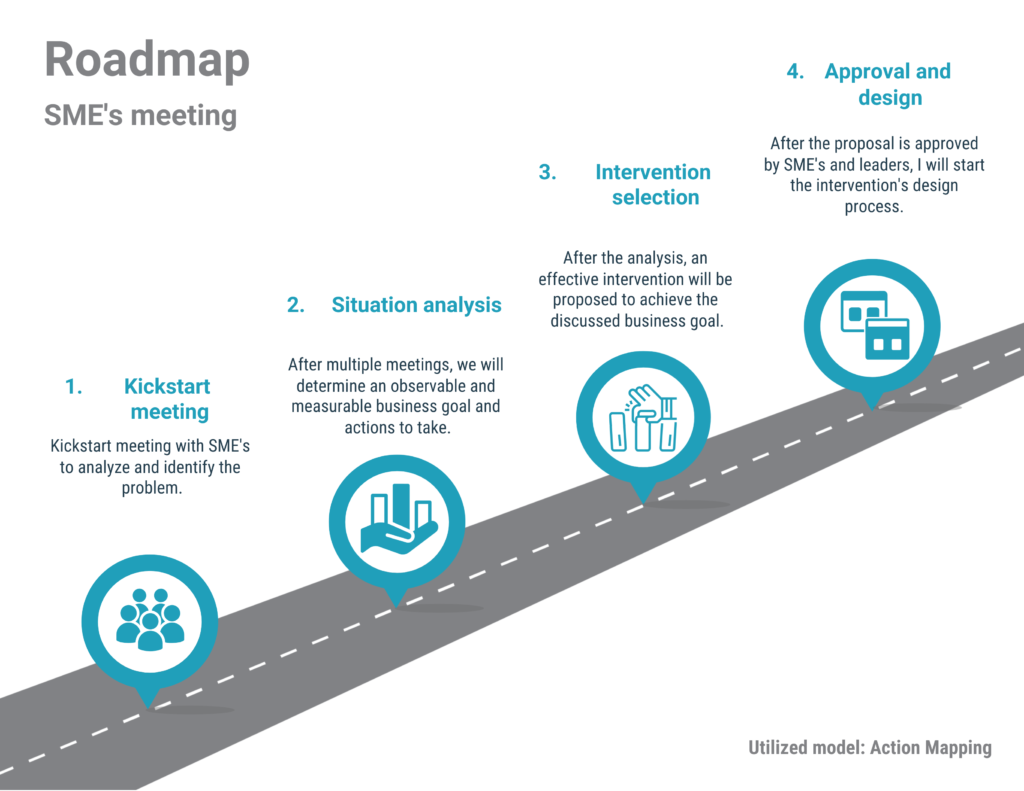
Action Map
Once the business goal was determined by SME’s and I, we started developing an action map with further actions staff needed to take to reach the observable and measurable business goal. We based the design in observable actions, instead of knowledge related actions. Knowledge and behavior are not interchangeable. Knowing something (knowledge) and acting on that knowledge (behavior) are distinct concepts. Just because an employee knows what to do doesn’t necessarily mean they will do it. Based on these actions, I developed an action map, which was reviewed and approved by the SME’s.
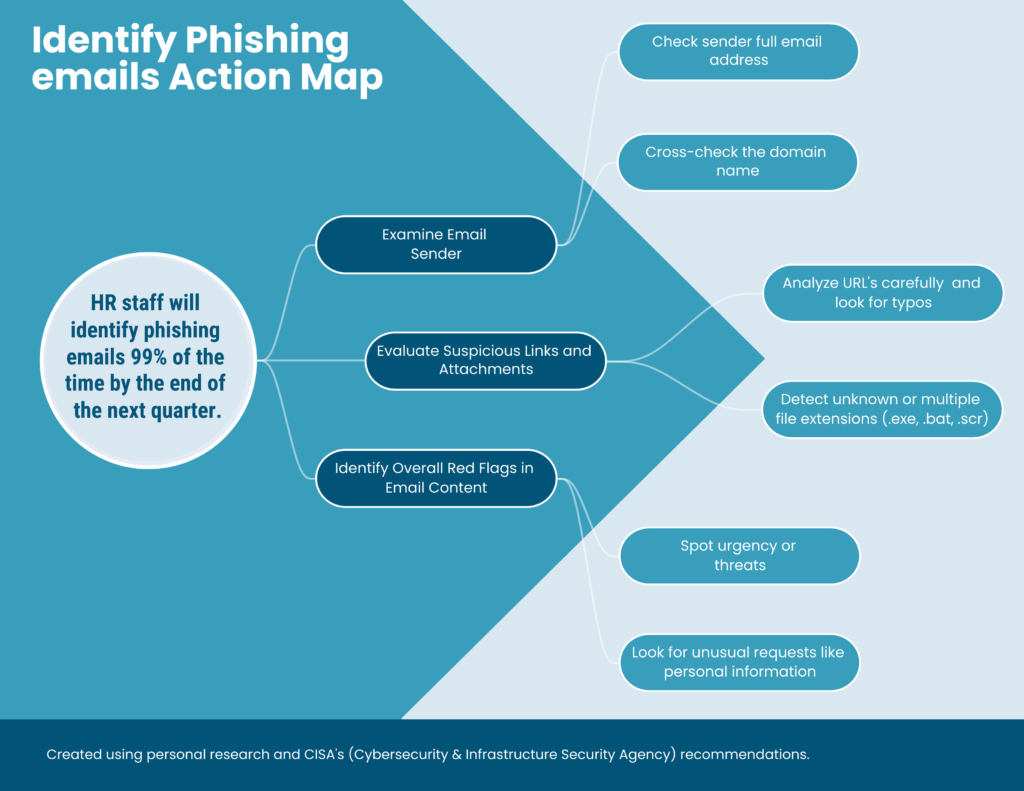
Visual Mockups
I maintained a simple and clean color scheme including different shades of gray and dark military green. I utilized a fixed master slide as a background showing a laptop with technical codes on the screen. The established font utilized was “Roboto black”. The established shapes include: snip diagonal rectangle, rectangles and one illustration. I used the Google Gmail’s interface as an inspiration to design the activity.

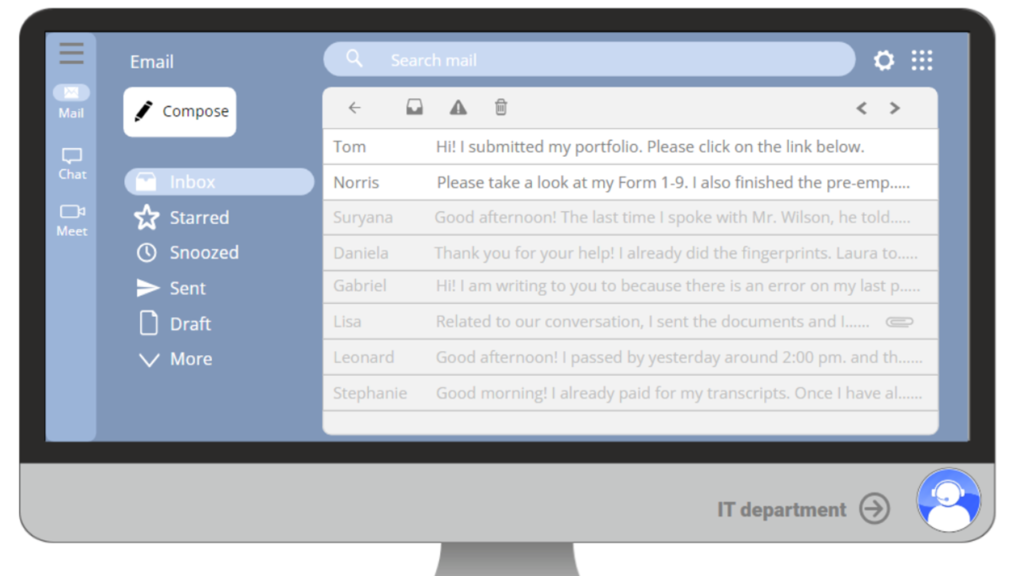
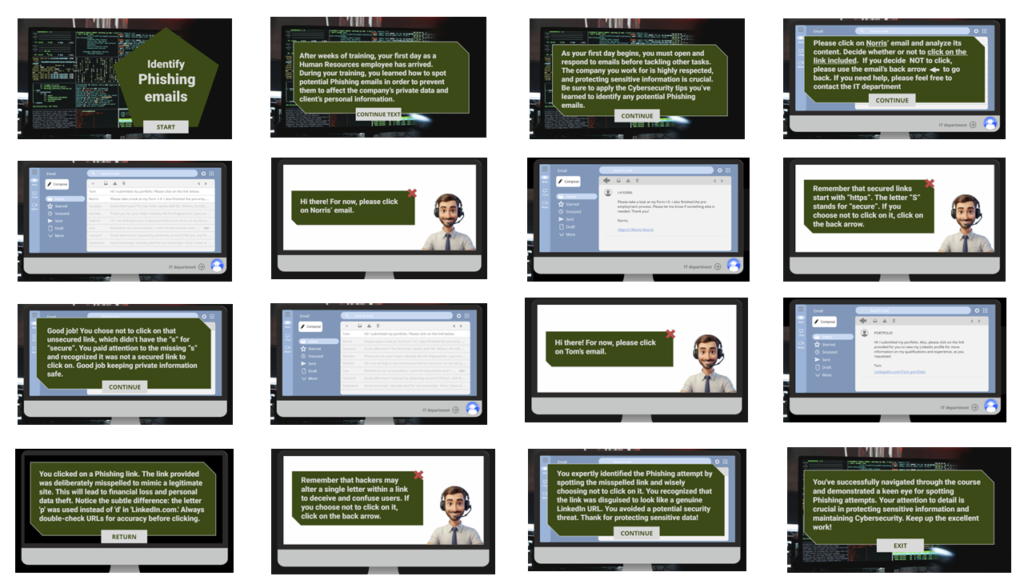
Storyboard
Once the intervention was approved by the SME’s and the action map was complete, I designed the flow of the scenario-based activity. I interviewed different staff members to have a better understanding of the daily life of a Human Resource employee and what they face daily. I wanted to design something extremely close to reality for employees to refine their skills in a setting that closely resembles their actual work environment, leading to better skill retention and application. This also help boosting employee’s self-confidence. I then created an interactive prototype in Articulate Storyline, integrating scenario-based exercises where learners could practice identifying phishing attempts in a realistic email interface. After reviewing the prototype with the SME’s and incorporating feedback, I finalized the course development in Storyline.
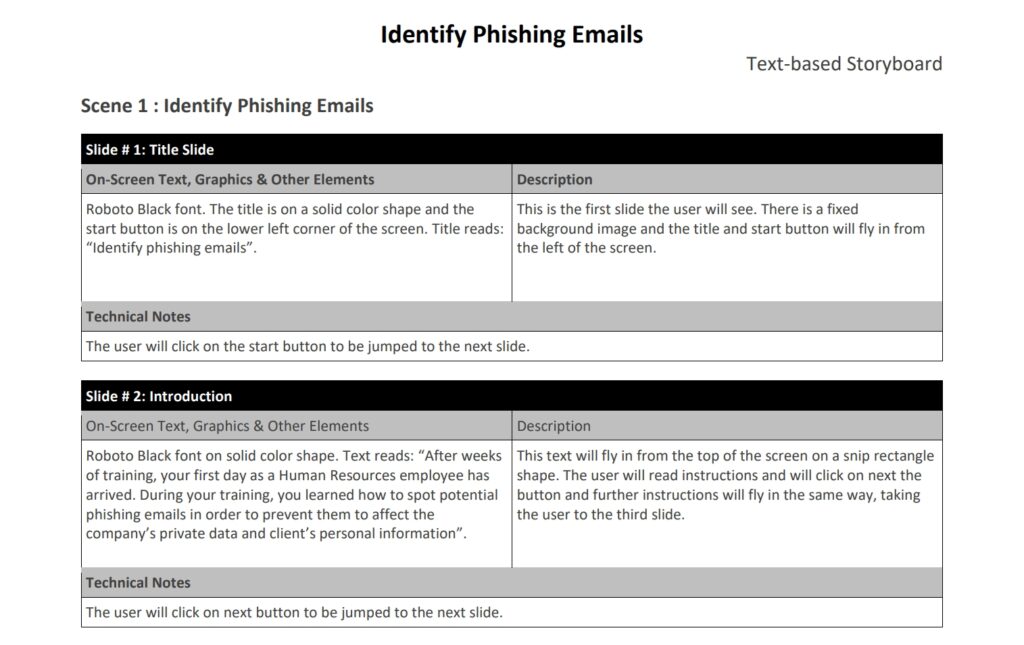
Results and Takeaways
After spending more than four months refining what started as an information-heavy demo course, I transformed it into something far more engaging and realistic. It was accurate and valuable, but needed to be less overwhelming. As a master’s student, I recognized that much of my professional growth was up to me. I invested time in reading, watching YouTube tutorials, LinkedIn Learning videos, and interviewing experts, all while continuing my master’s program. I spoke with software engineers, HR managers, and IT professionals. My experience as an educator exposed me to many dry, information-heavy trainings, and I was determined to avoid that. This journey gave me a deeper understanding of adult learning strategies and led to positive feedback from experts across various fields. I’m proud of the results, ready to develop a full version and to start collaborating in other projects.